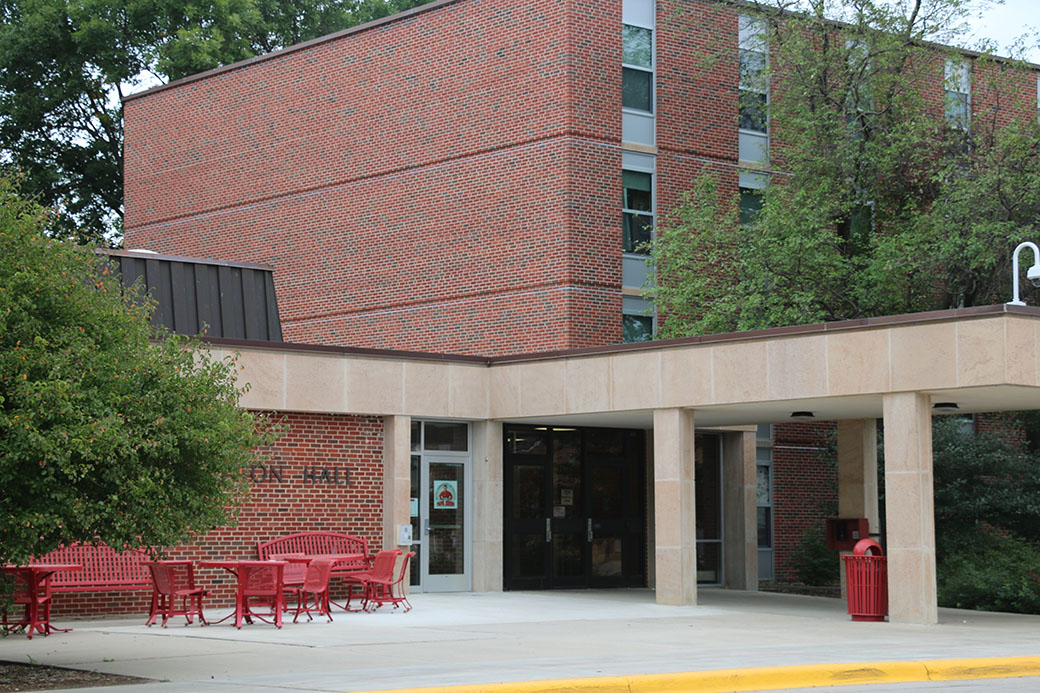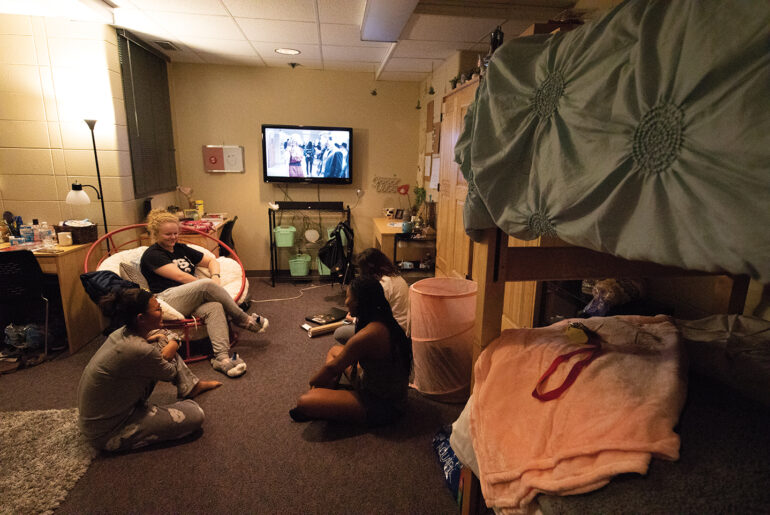
Housing’s overflow problem nothing new
Last fall, USD welcomed a record number of 10,066 incoming students, and while the university celebrated this mark, the influx of newcomers created a housing jam in halls across campus.
Single rooms in Brookman Hall opened as double rooms and hall lounges in North Complex transformed into four-person habitats, causing students to feel congestion and unease.
Nybol Kur, a sophomore nursing major who lived in a hall lounge last fall, told The Volante the uncertainty surrounding her living situation gave her “anxiety,” especially after she moved out of the lounge once she was accustomed to it. The crowding problem, however, is older than North Complex itself.

“Over 51 men were being turned away from already overloaded dormitories as the on-campus housing situation repeated last year’s crowding,” The Volante reported on Sept. 12, 1967, over a half-century ago. “All 1,018 beds for men residents and 827 for women were filled.”
146 students were placed in “temporary quarters,” the article stated, which included makeshift rooms in study rooms, lounges and basement recreation areas, similar to what “temporary housing” consists of today.
A year before, in September of 1966, Beede and Mickelson hall’s first-ever residents moved into its 150 rooms, immediately filling capacity, according to The Volante. Two years later, with incoming enrollment still increasing, students were forced to move into a “liveable but not likable” incomplete Olson Hall.
The completion of North Complex didn’t halt the issue, and housing continued to battle overpopulation for the next two decades into the turn of the century.
In 1989, The Volante reported student housing again hit 100% capacity and male students fancied temporary lounge rooms. Former Resident Services Director John Keller said every year an average of 60 to 80 students assigned to rooms drop out or don’t show up, and the reassignment of temporarily-housed students is dependent on the departure of others.
“We can’t find space because people are staying,” former Dean of Student Life Phil Covington told The Volante in 2012, when North Complex’s capacity still eclipsed 100% at the end of October. “Usually about this time rooms become available because students transfer, drop out or simply do not show up.”

Housing faced another enrollment increase in 1991, and in response turned down non-traditional students and upperclassmen to save space for freshmen.
“Had we accepted everyone that wanted housing, we would definitely be in bad shape,” housing director David Lorenz told The Volante.
Friday, USD announce its enrollment dipped from 10,066 to 9,920, roughly a one percent decline. This year’s designed capacity is 2,226 throughout the campus residence halls, according to Cody Burggraff, assistant housing director. Burggraff didn’t note whether or not capacity had been hit for the fall semester in time for publication.
“Occupancy is always a puzzle that housing has been trying to figure out, and we do our best to accommodate everyone,” Burggraff said last fall. “It’s not something that just plays out, we try to get everyone’s preferences as well.”


